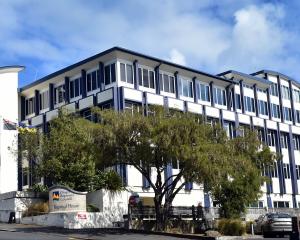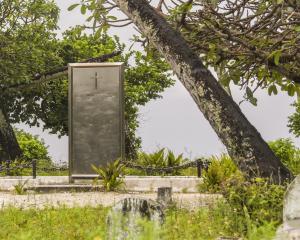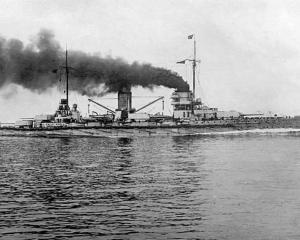In 2006 our Dunedin City Council decided to develop a mall linking the former Penroses building with the Golden Centre to provide under-cover shopping, protection against Dunedin's inclement weather, and to maintain the retail presence in the heart of Dunedin.
In late 2006 some citizens appealed against the proposal, saying areas of the city struggling to stay viable would become increasingly saggy-baggy if the city added further unneeded retail and office capacity. They also suggested the project made no commercial sense.
The city listened and immediately dropped two floors off its plans.
A budget was produced suggesting that the land could be developed for $27.8 million not including the cost of the land. The development was to be paid for using endowment funds.
Then, the city developed the site for a cost of $32.5 million. (The site was worth then some $9.6 million so the total cost was some $42.1 million.)
Mighty were the celebrations when Wall Street was opened. The city had a valuation of $32.5 million, which was exactly what was spent!
Our city property people, the committee and the officers, were very pleased. One of the officers was so pleased he thought it would be a good time to outline his plans for extending the assets being managed by the property department. All were agreed the return, more than 8%, was a fine effort and the jewel in the crown of our property portfolio.
Some of the citizens were disbelieving about the return. Next door to Wall Street was another mall with comparable outgoings. How was the city doing so much better? Questions were asked last year through the ODT about whether the return was indeed over 8%.
The answer came through loud and clear from the chairman of the property committee: yes, absolutely.
Syd Brown in fact was quoted in the ODT when responding to my question as to returns as saying ''... as she is an opponent of the Wall Street development it is unlikely that any argument will appease Ms Calvert but the figures speak for themselves. For the record the council's commercial activities are run on strictly commercial lines and its returns are calculated on a standard commercial basis''.
In October last year the manager of Dunedin City Property was quoted as saying: ''The decision was made to invest in relatively low risk commercial and industrial property. We've set a minimum return at the moment of 8% net for the whole portfolio.''
Still the doubts persisted. Questions were asked of the city through the Official Information Act. Much correspondence was entered into.
And then came the real story:The city had forgotten to include the land in its figures.
According to the figures provided, the money-in less money-out figure is $2.3 million and the actual cost of the development was $32.5 million without the land, which is worth $9.2 million. This brings the capital figure to some $41.7 million.
It turns out The Wall Street development actually has a return of some 5.5%, less than the cost of city borrowing. The position was in fact probably even worse, as there is no information in the city figures about tenant inducements, fit-outs and vacancy risk, all costs usually taken into account.
The best guess at the real return after taking into account all proper outgoings is likely to be nearer 4%, spookily close to what the citizens who first questioned the proposal thought it would be. In a belated attempt at explaining why the land had been left out the information came back that this was because the property ''was valued as an investment property'' and as such there was no land in the valuation report.
No-one knows whether there are any other gaps in the total figures for the property portfolio which would affect the return on the whole portfolio.
What an embarrassment for the city. Here we have the crown jewel earning for the city below the cost of borrowing funds (which is over 6%).
This is also an embarrassment for the officers and representatives in our property portfolio area who have been so pleased with themselves. And now some light at the end of the tunnel.
A new broom is sweeping through the city council. Positions are being rearranged, the property committee will be established with real expertise to advise the city on investments and we have a chief executive who is fulfilling the role of a proper old-fashioned town clerk, serving the elected representatives rather than taking off on his own fancies. For us all to live happily ever after we must learn from this sorry tale.
We are lucky to have leadership now within the city officials.
But we must be ever careful we are getting good information to our councillors so they can also play their rightful part. We should be suspicious of all who seek to suppress information through criticism of any questions as being stupid and of those who seek to question as against the city and its interests.
And we must encourage information to be readily available to the people so that if there are any failures within the city they can be corrected at an early opportunity.
It may be embarrassing to admit you were wrong. But not doing so is embarrassing and expensive for the ratepayers. We cannot afford to not learn from our mistakes.
• Hilary Calvert has property interests around Dunedin.











